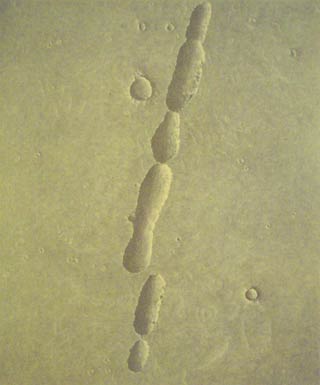Celestial Surfaces
by Gerald Mead
Peter Stephens paintings at Nina Freudenheim Gallery

Peter Stephens is one of this area’s most accomplished and prolific artists and due to his longtime association with the Nina Freudenheim Gallery—he has been in the gallery’s stable of artists since his first solo exhibition there in 1992—Buffalo audiences have been fortunate to see new entirely new bodies of his work approximately every other year before they are shown at galleries representing him in cities such as Toronto, Chicago, and San Diego.
With every new exhibition he demonstrates an insatiable desire to hone a visual vocabulary of painted imagery that he has been articulating since the 1980s, when his work was included in regional surveys at the Albright-Knox Art Gallery, a solo exhibition at the (then) Burchfield Art Center, and group exhibitions in New York City. Overwhelmingly representational, source imagery for his paintings has ranged from art historical reproductions of classical sculptures, turn-of-the-century pictorialist photographs, and paintings by Innes and others to images of the lunar surface of the moon. With nearly each successive series, Stephens has experimented (and most often succeeded) with a variety of multilayered painting techniques such as applying shellacs or thin veils of transparent color over the imagery, or creating a “crackled” surface. These sundry surface effects over the years have infused his work with an elegant textural quality that can only be fully appreciated by seeing the work in person. An ideal example of this is his large four-section landscape currently on view in the new Burchfield Penney Art Center in one of their inaugural collection exhibitions.
His newest work, paintings based on photographic imagery captured from spacecraft orbiting Mars, represents a significant departure for the artist since the work, by eliminating perimeters (such as the edge of a planet), has almost completely transformed itself into expertly rendered, abstract expressions of texture and form. The irony here is that they are in fact rooted in reality but since that reality is celestial landscapes, it remains unfamiliar and foreign territory to our eyes. As satellite image technology advances, new imagery emerges for us mortals to behold and Stephens has found a seemingly endless source of inspiration in these images.
The result is paintings that are as stunning as they are enigmatic. The moderately scaled Atlas, with its recognizable wind-torn peaks and terrain, is perhaps the closest to what we might associate with the surface of a planet and it is here that we are introduced to a surface treatment that becomes an understated leitmotif for this series. The painting, when viewed from various angles, has an almost imperceptible iridescent sheen to it, subtly animating its surface and successfully echoing the inherently otherworldly nature of the imagery. Russell’s Paradox, characterized by a flawless composition and compelling array of petroglyph-like organic and geometric shapes, is a spectacular painting. The question of scale is an important one here since there is virtually no point of reference. Is that shape that seems to be a depression several miles wide or a scant few centimeters? It is the indeterminacy and ambiguity between the micro and macro worlds that makes the work so enticing to view.

A Probability of Uncertainty, by Peter Stephens
|
The actual scale of the works—some are over six feet wide—utilize well this fluidity of scale. In one of the finest of these, A Probability of Uncertainty, Stephens demonstrates once again his virtuosity as a painter by depicting, with just enough exactitude to be poetic, the (shallow?) pocked surface of the planet. This work is equally intriguing when viewed at a distance and examined in detail at close range. Overall, his attention to detail and modeling and of lit/shadowed forms—in some cases cryptically concave or convex—is admirable and serves this body of work exceptionally well. Another irony that reveals itself in this series is the fact that the artist’s lyric and elegantly painted abstractions emerge from source material that is at its core dispassionate scientific documentation that was not created with aesthetic appreciation in mind. Even our perception of Mars as an environment devoid of color is called into question as Stephens renders these surfaces in subtle shades ranging from a grayed yellow to pale gray/violet. The artist’s interpretation of these images offer us a vehicle to experience, in an alternate pictorial manner, another world—a celestial body that we will only ever experience through photographic reproductions.
On another note, the moderately scaled series of galleries and spare installation aesthetic of the Nina Freudenheim Gallery continues to make it one of the most satisfying venues to view contemporary art in this city, and I hope that is the case for many years to come.
—gerald mead
blog comments powered by Disqus|
Issue Navigation> Issue Index > v8n7 (week of Thursday, February 12, 2009) > Artshorts > Celestial Surfaces This Week's Issue • Artvoice Daily • Artvoice TV • Events Calendar • Classifieds |









 Current Issue
Current Issue